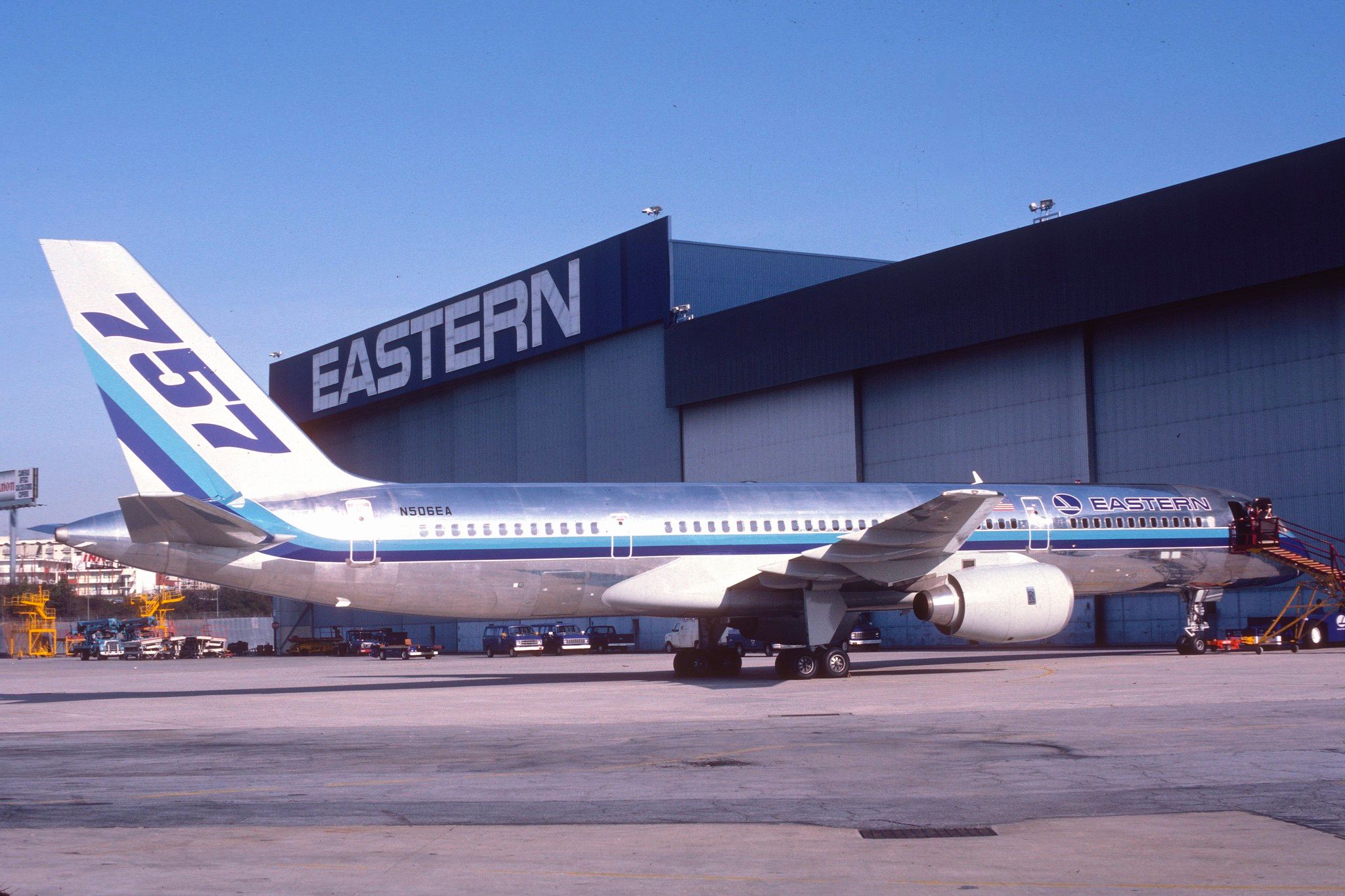Eastern Air Lines was a United States aviation stronghold for 65 years. From its founding in April 1926 to its grounding in January 1991, the carrier helped the country's airline sector evolve into what it is today. It has now been 32 years since the operator stopped flying. Here's a look at its downward spiral.
Tough times
Prior to its closure, Eastern Air Lines was headquartered at Miami International Airport. Still, it had other hubs all across the nation, including bases at Atlanta, Charlotte, Kansas City, New York JFK, New York LaGuardia, Philadelphia, San Juan, and Washington National airports.
Despite its command on the scene, the airline was faced with significant troubles during its final years. Like several other trunk carriers, the company struggled with the aftermath of the Airline Deregulation Act of 1978. The act caused a butterfly effect across the industry, with new, cheaper firms disrupting the market for veterans. Other legends, such as Pan Am, saw a similar fate.
Moreover, analysts cited the poor response by the Eastern’s leaders to adapt to the conditions. The likes of People Express were taking on large portions of Eastern’s network, and the latter found it hard to counter.
Texas Air bought Eastern in 1986. Yet, the new chapter got off to a tough start. In 1987, the Federal Aviation Administration (FAA) handed a $9.5 million fine to the airline after an audit found more than 78,000 violations of maintenance and safety regulations. This was the largest airline fine to date.
Get the latest aviation news straight to your inbox: Sign up for our newsletters today.
The troubles continued throughout the decade. Notably, Eastern president Phil Bakes revealed plans to lay off 4,000 workers while cutting down on westbound services in 1988.
With all the difficulties, in March 1989, Eastern filed for protection from its creditors. This was following a machinists union strike that started five days prior, which took a toll on the airline’s flights.
There were some high hopes with attractive ticket prices seeing passengers coming back from competitors. However, the rise of jet fuel costs due to the invasion of Kuwait hindered momentum. These factors were complemented by the weak business travel market of the period.
Finally grounded
Thus, at the turn of 1991, it was confirmed. Eastern would shut down and liquidate its holdings. A total of 18,000 employees were to be dismissed in the move.
The New York Times reported the following about the turmoil in a January 19th, 1991 article.:
“Eastern's decision to shut down was made at headquarters in Miami. Martin R. Shugrue, the trustee appointed to run the airline by the court, presided over the meeting, said someone who talked with Eastern's management. Only two months ago, Mr. Shugrue had argued that the airline could be turned around by March and persuaded Judge Lifland to release another $120 million from an escrow fund meant for the unsecured creditors. But yesterday, he had run out of cash. Unsecured Creditors,”
“The airline's unsecured creditors had argued that despite an energetic attempt to revive the airline after Mr. Shugrue took over in April, it was evident by November that its losses could not be stemmed. They urged Judge Lifland to shut down the carrier then and begin liquidating the assets while the airline still had cash to help repay them. The unsecured creditors include the aircraft makers Airbus Industrie and Boeing, the engine makers General Electric and Pratt & Whitney, banks, and the Pension Benefit Guaranty Corporation, which has claims because Eastern's pension are not adequately financed. The unsecured creditors are owed about $1.4 billion.”
Love aviation history? Discover more of our stories here.
Leaving a legacy
The Eastern name has cropped up several times since this carrier stopped flying. For instance, the Eastern Air Lines Group purchased the intellectual property of the original in 2019. This outfit flew between 2015 and 2017. Dynamic Airways then changed its name to Eastern Airlines in 2018.
Nonetheless, the model and presence of these brands differ from the legacy carrier of Eastern Air Lines. The company will long be remembered across the aviation industry.
What are your thoughts about Eastern Air Lines’ downturn? What do you make of the carrier’s overall history during its tenure? Let us know what you think of the operator and its services in the comment section.
Source: New York Times

